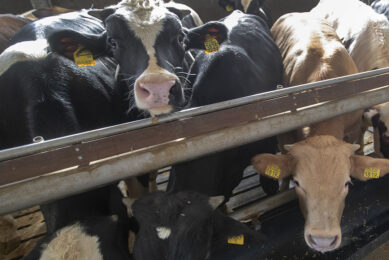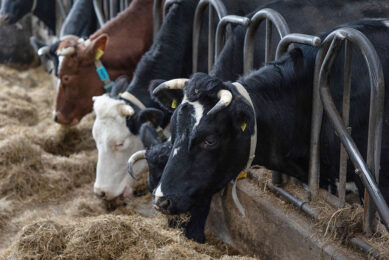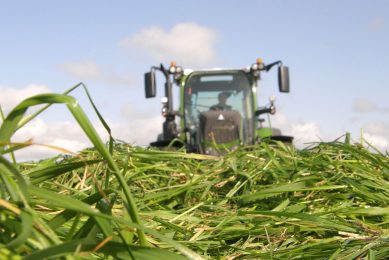Testing and vigilance can reduce risk for producers
Heavy rains have led to a warm-up in South Dakota, and these conditions have dairy producers concerned because of the potential threat mycotoxins pose to their cows.
South Dakota Cooperative Extension Dairy Specialist Alvaro Garcia said dairy cows pose a particular challenge because of the wide-ranging variety of feeds that make up their diets.
"On one hand, multiple feeds in the diet assures that the risk is spread among them," Garcia said. "But on the other hand, if more than one feed is affected, the effects are additive and may result in a mycotoxin problem in the total mixed ration even when the toxin level of each individual feed was borderline acceptable."
Some feeds more risky
Garcia said some feeds post higher inherent risks. Corn and its byproducts are among those to evaluate carefully, particularly when there are poor weather conditions at harvest.
"When a producer suspects aflatoxin problems, it is important to stay away from feeding ground corn with a lot of fines, such as the feed found near the bottom of the bin," said Garcia.
"Aflatoxin concentration is almost 90% higher in fines and much greater in the last 3 feet (1 metre) of the bin."
Corn silage
Corn silage also poses a risk particularly during the fall and early winter, when mould spores are growing in the field. Garcia said spores can passively inoculate recently opened corn silage storage.
"The spores find optimum growing conditions, such as highly susceptible damaged kernels, and they find ideal temperature due to fermentation and sugar oxidation. Air infiltration in poorly packed corn silages increases the risk."
In order to avoid this problem, producers must engage in meticulous daily feed-out processes from the entire face of the silage pile and at least 10 inches (25cm) in depth.
"Some larger dairies have defacers that allow for a very clean and even surface, and maintaining the tarp tightly on top and on the sides also decreases ‘flapping,’ thus reducing oxygen exposure," said Garcia.
Look for subtle changes
Producers should pay attention to anything out of the ordinary with their dairy cows. Rather than looking for dramatic toxicity events showing typical textbook symptoms of aflatoxicosis, look for more subtle changes, Garcia said
"Aflatoxin poisoning usually progresses sub-clinically with reduced immune function, fertility, and production," Garcia said.
"Higher-than-normal incidences of displaced abomasums and ketosis may result from reduced feed intake, and increased incidence of lameness may be a result of cows sorting the feed because of off-flavors or smells as a result of fungal growth."
Test suspicious feeds
Garcia said dairy producers can start by looking for non-specific symptoms that depart from ordinary cow behaviour.
"Test suspected feeds whenever they are included at more than 10% of the diet’s dry matter content," said Garcia.
"Dilute or remove altogether feeds that have high concentrations of aflatoxins, and use adsorbent agents in the total mixed ration such as sodium bentonite-based agents, yeast walls, or esterified gluco-mannan-based agents. And make sure to use them at manufacturer-recommended concentrations."
Source: PhysOrg.com
Join 26,000+ subscribers
Subscribe to our newsletter to stay updated about all the need-to-know content in the feed sector, three times a week. Beheer
Beheer









 WP Admin
WP Admin  Bewerk bericht
Bewerk bericht